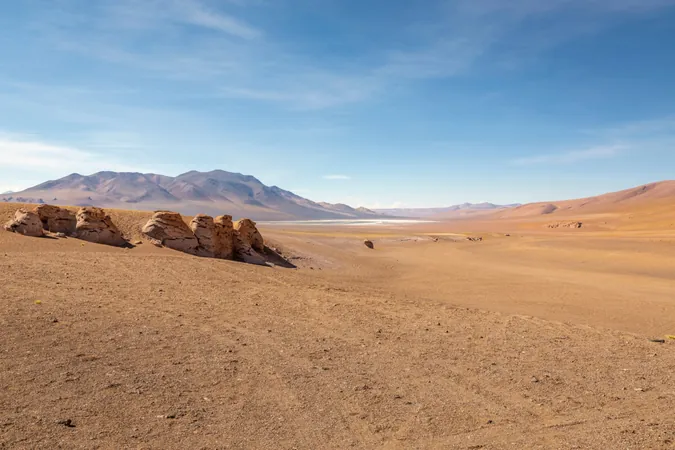
Astonishing Discovery: Life Thriving in the Atacama Desert's Harshest Regions!
2024-11-14
Author: Yu
In a groundbreaking study, scientists have revealed the astonishing resilience of life in one of the most inhospitable places on Earth—the Atacama Desert. This stark landscape, often referred to as a "martian-like" environment due to its extreme dryness, has shown that life can not only survive but thrive against all odds.
Unlocking the Secrets of Microbial Life
In their quest to understand the microbial communities residing in the Atacama Desert, research teams meticulously collected soil samples across various locations, traversing areas with different moisture levels—from the coastal regions, where life flourishes, to the parched inland sites, where water is a rare commodity. By employing a cutting-edge technique to isolate intracellular DNA (iDNA) from extracellular DNA (eDNA), they focused exclusively on the genetic material from living cells. This innovative approach was crucial in uncovering which microorganisms were not just present but actively working to adapt to the desert's grueling conditions.
Diversity in Desolation: Key Findings
The study's results were nothing short of revolutionary: the Atacama Desert is home to a remarkably diverse array of microbial life, even amid its most arid zones. Researchers identified various species of bacteria and archaea displaying notable adaptability. Some of these microorganisms are "generalists," thriving in a range of conditions, while others are "specialists," meticulously adapted to specific niches within this unforgiving environment. Interestingly, the coastal areas exhibited a richer diversity of life compared to the dryer inland regions, which hosted uniquely specialized microbes engineered for survival in minimal water and nutrient settings.
Research Challenges and Limitations
Despite the promising findings, the scientists encountered significant challenges. The desert's low microbial biomass made it difficult to extract sufficient DNA, especially from deceased cells. Traditional methods, including RNA analysis crucial for detecting active life forms, often falter in such low-biomass scenarios. While the unique method employed offered key insights, it may not have been foolproof, as remnants of DNA from dead cells could have inadvertently influenced their results.
Implications for Future Research: Life Beyond Earth?
The implications of this research extend far beyond the Atacama Desert. The survival strategies of both generalists and specialists could inform our understanding of how life might exist in similarly harsh environments on other planets. The resilience of these microorganisms raises intriguing questions about the potential for life on Mars and beyond.
Funding and Collaboration
This pioneering study received substantial support from a multitude of research grants, thanks to the collaborative efforts of institutions in Germany, Chile, and the United States. The European Research Council (ERC) funded essential aspects of the project, including sample collection and analysis. This remarkable cross-institutional collaboration came together to shine a light on the potential for life in extreme conditions.
In conclusion, this remarkable study not only bolsters our understanding of survival in extreme environments on Earth but also ignites excitement about the possibilities of life beyond our planet. As scientists continue to unravel the mysteries of the natural world, the discoveries made in the Atacama Desert could prove pivotal in the search for extraterrestrial life. Stay tuned as we uncover more astonishing secrets of our planet and beyond!




 Brasil (PT)
Brasil (PT)
 Canada (EN)
Canada (EN)
 Chile (ES)
Chile (ES)
 España (ES)
España (ES)
 France (FR)
France (FR)
 Hong Kong (EN)
Hong Kong (EN)
 Italia (IT)
Italia (IT)
 日本 (JA)
日本 (JA)
 Magyarország (HU)
Magyarország (HU)
 Norge (NO)
Norge (NO)
 Polska (PL)
Polska (PL)
 Schweiz (DE)
Schweiz (DE)
 Singapore (EN)
Singapore (EN)
 Sverige (SV)
Sverige (SV)
 Suomi (FI)
Suomi (FI)
 Türkiye (TR)
Türkiye (TR)